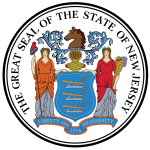
Presidential elections were held in the United States on November 2, 1852. Democratic nominee Franklin Pierce defeated Whig nominee General Winfield Scott.
The Barnburners and Hunkers were the names of two opposing factions of the New York Democratic Party in the mid-19th century. The main issue dividing the two factions was that of slavery, with the Barnburners being the anti-slavery faction. While this division occurred within the context of New York politics, it reflected the national divisions in the Democratic Party and the United States broadly in the years preceding the American Civil War.

George Franklin Fort was a physician, judge, and Democratic Party politician who served as the 16th Governor of New Jersey from 1851 to 1854.
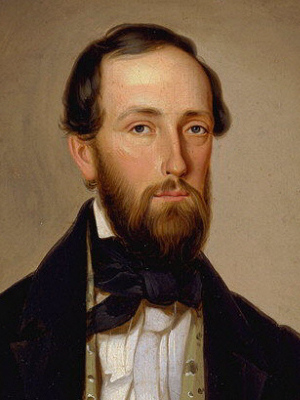
Rodman McCamley Price was an American naval officer, businessman, and Democratic Party politician who served as the 17th Governor of New Jersey from 1854 to 1857. He also worked to establish the American government in California and served on the first San Francisco City Council, where he became a real estate tycoon. He represented New Jersey in the United States House of Representatives for one term from 1851 to 1853.

William George Crosby was an American politician and the 23rd Governor of Maine. A Whig, Crosby served two single-year terms as governor from 1853 to 1855.

The 1852 New York state election was held on November 2, 1852, to elect the governor, the lieutenant governor, a Canal Commissioner and an Inspector of State Prisons, as well as all members of the New York State Assembly.

The 1853 New York state election was held on November 8, 1853, to elect the Secretary of State, the State Comptroller, the Attorney General, the State Treasurer, the State Engineer, two Judges of the New York Court of Appeals, a Canal Commissioner, an Inspector of State Prisons and the Clerk of the Court of Appeals, as well as all members of the New York State Assembly and the New York State Senate.
The 1840 Democratic National Convention was held in Baltimore, Maryland, from May 5 to May 6. The Democratic Party re-nominated President Martin Van Buren by acclamation, but failed to select a nominee for vice president. Van Buren is the only major party presidential nominee since the ratification of the Twelfth Amendment to seek election without a running mate. Dragged down by the unpopularity of the Panic of 1837, Van Buren was defeated by the Whig Party's ticket in the 1840 presidential election.

The 1855 United States Senate election in New York was held on February 6, 1855, by the New York State Legislature to elect a U.S. Senator to represent the State of New York in the United States Senate.

The 1857 United States Senate election in New York was held on February 3, 1857, by the New York State Legislature. Incumbent Whig Senator Hamilton Fish did not stand for re-election. The seat was won by Preston King, a former U.S. Representative and member of the newly formed Republican Party. King was the first Republican elected to represent New York, although William H. Seward had joined the party after being elected as a Whig in 1855.

The 1852–53 United States Senate elections were held on various dates in various states, coinciding with the 1852 presidential election. As these U.S. Senate elections were prior to the ratification of the Seventeenth Amendment in 1913, senators were chosen by state legislatures. Senators were elected over a wide range of time throughout 1852 and 1853, and a seat may have been filled months late or remained vacant due to legislative deadlock. In these elections, terms were up for the senators in Class 2.
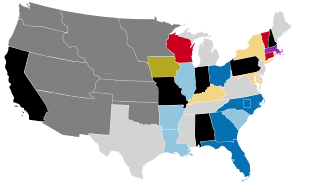
The 1854–55 United States Senate elections were held on various dates in various states. As these U.S. Senate elections were prior to the ratification of the Seventeenth Amendment in 1913, senators were chosen by state legislatures. Senators were elected over a wide range of time throughout 1854 and 1855, and a seat may have been filled months late or remained vacant due to legislative deadlock. In these elections, terms were up for the senators in Class 3.
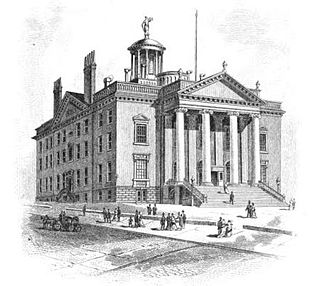
The 78th New York State Legislature, consisting of the New York State Senate and the New York State Assembly, met from January 2 to April 14, 1855, during the first year of Myron H. Clark's governorship, in Albany.

The 1852 Missouri gubernatorial election was held on August 2, 1852, the Democratic nominee, Sterling Price, defeated Whig candidate James Winston.

The 1854 Massachusetts gubernatorial election was held on November 15. American Party candidate Henry J. Gardner was elected to his first term as governor, defeating incumbent Whig governor Emory Washburn.
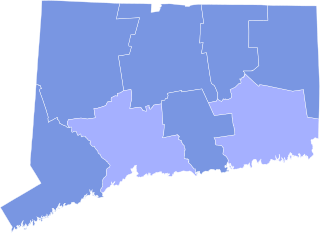
The 1853 Connecticut gubernatorial election was held on April 4, 1853. Incumbent governor and Democratic Party nominee Thomas H. Seymour defeated former state legislator and Whig nominee Henry Dutton and former state legislator and Free Soil nominee Francis Gillette with 51.01% of the vote.

The 1853–54 Massachusetts gubernatorial election consisted of an initial popular held on November 14, 1853, which was followed by a legislative vote that was conducted on January 9, 1854, which elected Whig Party nominee Emory Washburn. The ultimate task of electing the governor had been placed before the Massachusetts General Court because no candidate received the majority of the vote required for a candidate to be elected through the popular election.

The 1852–53 Massachusetts gubernatorial election consisted of an initial popular vote held on November 8, 1852, followed by a legislative vote conducted on January 12, 1853, which elected Whig Party nominee John H. Clifford. The ultimate task of electing the governor had been placed before the Massachusetts General Court because no candidate received the majority of the vote required for a candidate to be elected through the popular election.

The 1851–52 Massachusetts gubernatorial election consisted of an initial popular vote held on November 10, 1851, followed by a legislative vote conducted on January 12, 1852. Incumbent Democrat Governor George S. Boutwell was reelected to a second term in office. The ultimate task of electing the governor had been placed before the Massachusetts General Court because no candidate received the majority of the vote required for a candidate to be elected through the popular election.

The 1853 Ohio gubernatorial election was held on October 11, 1853.

